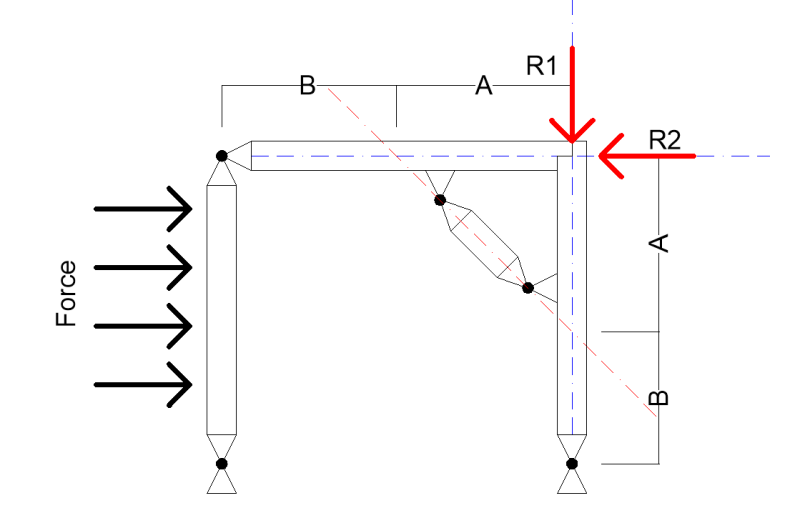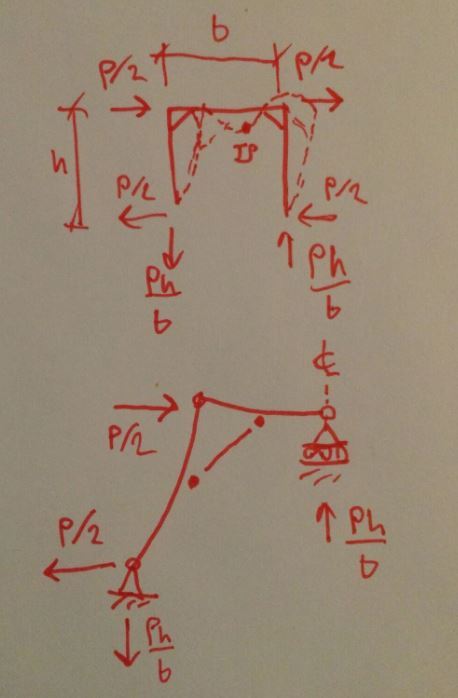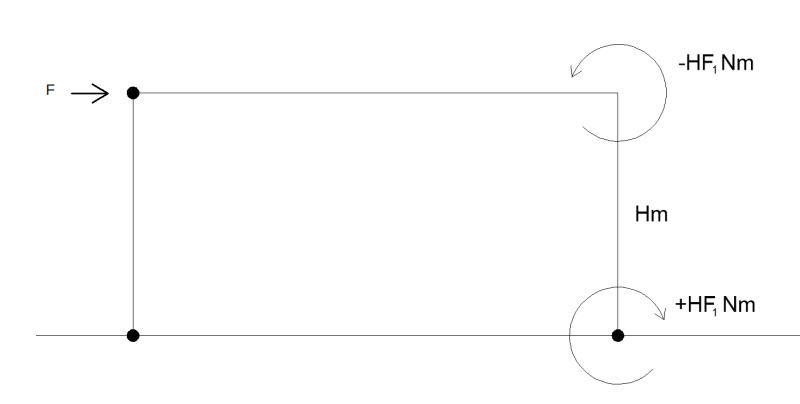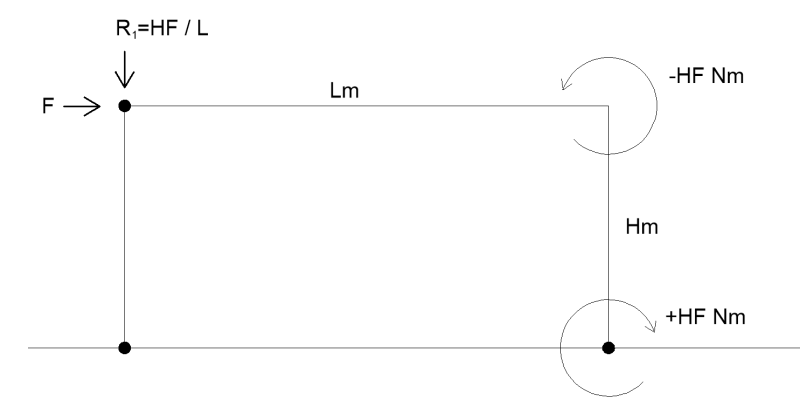Weaverofduart
Agricultural
Knees braces are used to prevent a post and beam frame from wracking under lateral loads. Everyone knows that.
But just adding knee braces where ever isn't a solution. The size of the knee brace (as in its length) makes a big difference.
The longer the knee brace the more it protrudes into the usable space of the timber frame but the smaller the knee brace the stronger the joint between the associated post and beam has to be.
When a frame is laterally loaded the leeward (down wind) knee brace will be under compression. Timber is generally very good under compression so even a moderately sized knee brace will be more than adequate.
This means that the most likely point of failure is the mortice and tenon joint between the associated post and beam which will be under tension.
The shorter the knee brace the greater the leverage against this joint.
How do I calculate the horizontal and vertical reaction forces in this joint so that I can appropriately determine the length/positioning of the knee brace (compromise of usability of internal space versus strength), the size of the tenon and the required relish of the wood surrounding the mortice.

I've drawn this diagram to emphasise the key roll of the post and beam joint on leeward side of the frame. Assuming that all the other joints are working as hinges that means that this joint has to be able to deal with all the reaction forces by itself.
But just adding knee braces where ever isn't a solution. The size of the knee brace (as in its length) makes a big difference.
The longer the knee brace the more it protrudes into the usable space of the timber frame but the smaller the knee brace the stronger the joint between the associated post and beam has to be.
When a frame is laterally loaded the leeward (down wind) knee brace will be under compression. Timber is generally very good under compression so even a moderately sized knee brace will be more than adequate.
This means that the most likely point of failure is the mortice and tenon joint between the associated post and beam which will be under tension.
The shorter the knee brace the greater the leverage against this joint.
How do I calculate the horizontal and vertical reaction forces in this joint so that I can appropriately determine the length/positioning of the knee brace (compromise of usability of internal space versus strength), the size of the tenon and the required relish of the wood surrounding the mortice.

I've drawn this diagram to emphasise the key roll of the post and beam joint on leeward side of the frame. Assuming that all the other joints are working as hinges that means that this joint has to be able to deal with all the reaction forces by itself.







